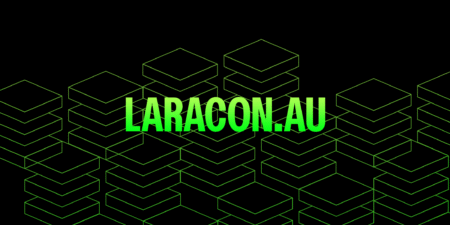
The U.S. Cybersecurity and Infrastructure Security Agency (CISA), alongside the National Security Agency (NSA), the Federal Bureau of Investigation (FBI), and international cybersecurity partners, has issued an urgent advisory titled “Fast Flux: A National Security Threat.” The advisory highlights the growing use of fast flux techniques by cybercriminals and potentially nation-state actors to evade detection and establish highly resilient and stealthy infrastructure for malicious activities.
Fast flux is a cloaking mechanism employed by cyber actors to obfuscate their command and control (C2) infrastructure. This technique involves rapidly rotating the IP addresses linked to malicious domains, making it exceedingly difficult for defenders to track, block, or disrupt the attacker’s infrastructure. By continuously altering domain and IP configurations, fast flux enables cybercriminals to keep their operations hidden from security measures.

The joint advisory, issued by CISA, NSA, FBI, the Australian Signals Directorate’s Australian Cyber Security Centre (ACSC), the Canadian Centre for Cyber Security (CCCS), and the New Zealand National Cyber Security Centre (NCSC-NZ), warns of the ongoing threat posed by fast flux-enabled activities. It urges cybersecurity service providers (CSPs), particularly Protective DNS (PDNS) services, to take proactive steps to detect and mitigate the risks associated with this evasive technique.
The Evasion Techniques Behind Fast Flux
The fundamental goal of fast flux is to create a moving target that is almost impossible to block or trace. This technique involves manipulating DNS (domain name system) records, which link domain names to IP addresses. By continuously changing these records, malicious actors can obscure the true location of their infrastructure, making it more resilient to takedowns or law enforcement efforts.
Two variants of fast flux are commonly used by cybercriminals:
- Single Flux: This involves associating a single domain with multiple rotating IP addresses. As one IP address is blocked, others can take its place, maintaining the domain’s accessibility. This allows cyber actors to keep their malicious services up and running, even when part of the infrastructure is disrupted.
- Double Flux: A more advanced variant, double flux involves rotating not only the IP addresses but also the DNS name servers that resolve the domain. This technique further complicates the task of identifying and blocking malicious activity, as it adds an extra layer of redundancy and anonymity.
Both variants rely heavily on compromised devices—often part of a botnet—to serve as proxies or relay points for malicious traffic. This distributed network makes it harder for defenders to isolate and block harmful communications.
The Role of Bulletproof Hosting and Nation-State Actors
Bulletproof hosting (BPH) services are one of the primary enablers of fast flux networks. These services are designed to provide hosting solutions that defy law enforcement intervention, offering anonymity for malicious cyber actors. Some BPH providers go as far as to offer fast flux as a service, allowing clients to easily mask their malicious activities from detection.
Notably, fast flux has been linked to a variety of high-profile cybercriminal activities, including ransomware attacks by notorious groups such as Hive and Nefilim, and advanced persistent threat (APT) actors like Gamaredon. The use of fast flux in these attacks significantly increases the resilience of their operations, making it difficult for law enforcement and cybersecurity professionals to respond effectively.
The Threat to Phishing and Cybercrime Marketplaces
In addition to its role in maintaining C2 communications, fast flux is also a critical tool for phishing campaigns. By rotating domains and IP addresses rapidly, cybercriminals can ensure that their phishing websites remain online, even when certain domains are blocked by security systems. This tactic allows phishing attacks to reach a broader audience and sustain their impact, making it harder for organizations to mitigate the damage.
Furthermore, fast flux is often used to support illicit marketplaces and forums on the dark web. These platforms, which host a range of illegal activities from selling stolen data to distributing malware, rely on fast flux to maintain availability and avoid being shut down by authorities.
Detection and Mitigation of Fast Flux
The challenge with detecting fast flux is that it often mimics legitimate behaviors in high-performance network environments, such as content delivery networks (CDNs). To effectively combat this threat, CISA, NSA, FBI, and other agencies recommend a multi-layered approach to detection and mitigation.
Detection Techniques:
- Anomaly Detection: Implementing DNS query log analysis and anomaly detection can help identify fast flux activity. This includes looking for unusually high entropy or IP diversity, frequent IP address rotations, and low time-to-live (TTL) values in DNS records.
- Geolocation Inconsistencies: Fast flux domains typically generate large volumes of traffic from multiple geolocations, which can be an indicator of malicious activity.
- Threat Intelligence Feeds: Leveraging threat intelligence platforms and reputation services can help identify known fast flux domains and associated IP addresses.
Mitigation Strategies:
- DNS and IP Blocking: Blocking access to known malicious fast flux domains through non-routable DNS responses or firewall rules can help mitigate the threat. Sinkholing—redirecting malicious traffic to a controlled server for analysis—can also aid in identifying compromised hosts.
- Reputational Filtering: Blocking traffic from domains or IPs with poor reputations, particularly those associated with fast flux, can help prevent malicious communications.
- Collaborative Defense: Sharing fast flux indicators—such as domains and IP addresses—among trusted partners and threat intelligence communities enhances collective defense efforts.
Fast flux remains a cybersecurity challenge, enabling malicious actors to evade detection. CISA, NSA, and the FBI urge organizations to work with cybersecurity providers, especially those offering Protective DNS services, to implement timely detection and mitigation strategies, reducing the risks associated with this cyber threat.
Source: Read More

